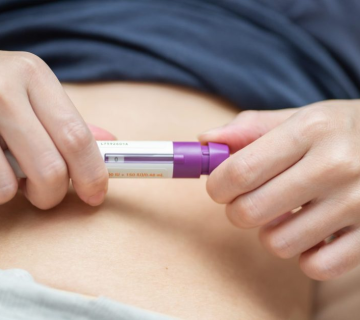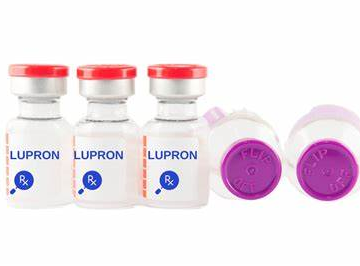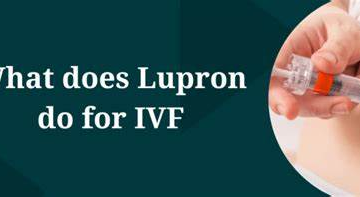
If you’re exploring fertility treatments, you’ve probably heard of IVF (in vitro fertilization). But have you come across minimal stimulation IVF? It’s a gentler, less intense version of traditional IVF that’s gaining attention for its unique approach. Whether you’re worried about hormone overload, high costs, or just want a simpler process, this option might be worth a closer look. In this guide, we’ll dive deep into what minimal stimulation IVF is, how it works, who it’s best for, and what the latest research says. Plus, we’ll share practical tips to help you decide if it’s right for you—stuff you won’t find in every article out there!
What Is Minimal Stimulation IVF?
Minimal stimulation IVF—sometimes called mini IVF or gentle IVF—is a fertility treatment that uses lower doses of fertility drugs compared to traditional IVF. The goal? To collect fewer eggs (usually 1-5) but still give you a solid shot at pregnancy. Think of it like baking a small batch of cookies instead of a whole dozen—you don’t need as many ingredients, and it’s less work, but you still get something delicious.
How It Differs from Traditional IVF
Traditional IVF pumps up your ovaries with high doses of hormones to produce 10-15 eggs (or more!) in one cycle. Mini IVF, on the other hand, takes a lighter approach:
-
- Fewer drugs: Often just pills (like Clomid) or low-dose injections.
-
- Fewer eggs: Aims for quality over quantity.
-
- Less monitoring: Fewer doctor visits and ultrasounds.
It’s not about overloading your system—it’s about working with your body’s natural rhythm.
Why People Choose It
People are drawn to minimal stimulation IVF for all sorts of reasons:
-
- Lower cost: Fewer drugs and appointments can mean smaller bills.
-
- Fewer side effects: Less hormonal chaos = less bloating, mood swings, or risk of ovarian hyperstimulation syndrome (OHSS).
-
- Simpler process: It feels less overwhelming for some.
Sound intriguing? Let’s dig into how it actually works.
How Does Minimal Stimulation IVF Work?
The mini IVF process follows the same basic steps as traditional IVF—just with a lighter touch. Here’s a step-by-step breakdown to make it crystal clear.
Step 1: Gentle Ovulation Boost
Instead of flooding your system with heavy-duty hormones, mini IVF starts with milder meds. You might take:
-
- Clomiphene citrate (Clomid): A pill that nudges your ovaries to produce a few eggs.
-
- Low-dose gonadotropins: Tiny injections to give a little extra push.
This lasts about 5-10 days, depending on how your body responds.
Step 2: Monitoring (But Not Too Much)
Your doctor will check in with ultrasounds and blood tests—but not as often as with traditional IVF. They’re watching to see when those few eggs are ready. Less poking and prodding = less stress!
Step 3: Egg Retrieval
Once your eggs are mature, a quick procedure collects them. It’s the same as regular IVF: a thin needle guided by ultrasound grabs the eggs from your ovaries. You’re usually asleep for this (phew!).
Step 4: Fertilization and Embryo Creation
In the lab, your eggs meet sperm—either from your partner or a donor. The goal is to create healthy embryos. Since you’re starting with fewer eggs, every one counts!
Step 5: Embryo Transfer
A few days later, the best embryo (or two) gets placed into your uterus. It’s a simple process—no surgery, just a thin tube and a hopeful wait.
How Long Does It Take?
Start to finish, a mini IVF cycle usually takes 2-3 weeks. That’s about the same as traditional IVF, but with less intensity along the way.
Who Is Minimal Stimulation IVF Best For?
Not everyone’s fertility journey is the same, so mini IVF isn’t a one-size-fits-all solution. Here’s who might benefit most—and who might not.
Perfect Candidates
✔️ Older women (35+): If your egg count is naturally lower, mini IVF can work with what you’ve got instead of pushing for more. ✔️ Low ovarian reserve: If tests show your ovaries aren’t producing many eggs anyway, why overstimulate them? ✔️ People sensitive to hormones: If you’ve had bad reactions to meds before, the gentler approach might feel safer. ✔️ Budget-conscious folks: It’s often cheaper than traditional IVF (more on that later). ✔️ First-timers: If you’re new to fertility treatments and want to ease in, this could be a great start.
Who Might Skip It?
❌ Young women with lots of eggs: If your ovaries are in overdrive, traditional IVF might maximize your chances. ❌ Severe male infertility: If sperm quality is a big issue, you might need more eggs to increase the odds. ❌ Those needing multiple tries: Fewer eggs mean fewer embryos, so you might run out of options faster.
Real-Life Example
Imagine Sarah, 38, who’s been trying to conceive for two years. Her egg count is low, and she hates needles. Mini IVF lets her use Clomid pills instead of daily shots, and she feels more in control. It’s not perfect for everyone, but for Sarah? It’s a match.
What Does the Latest Research Say About Mini IVF?
Science is always evolving, and minimal stimulation IVF has been under the microscope lately. Let’s break down what experts have found in 2024 and early 2025—stuff you won’t see in every article.
Success Rates: Quality Over Quantity?
A 2024 study from the Journal of Assisted Reproduction and Genetics compared mini IVF to traditional IVF in women over 35. Here’s the scoop:
-
- Mini IVF had a pregnancy rate of 25-30% per cycle for women with low ovarian reserve.
-
- Traditional IVF hit 35-40%, but with way more eggs (and cost).
The takeaway? Mini IVF might not churn out as many babies per cycle, but it’s close—especially if you’re not swimming in eggs to begin with.
Fewer Risks
Another 2025 paper from Fertility and Sterility found that mini IVF slashes the risk of OHSS to under 1%, compared to 5-10% with traditional IVF. OHSS can make your ovaries swell and leak fluid—yikes! With mini IVF, that’s almost off the table.
Fresh Data Point: Embryo Quality
Here’s something new: a small 2025 trial at UCLA showed that embryos from mini IVF cycles had similar quality to those from traditional IVF. Why? Fewer eggs might mean your body focuses energy on the best ones. It’s not a huge study yet, but it’s a promising hint.
What This Means for You
The research says mini IVF won’t beat traditional IVF in raw numbers, but it’s a solid contender—especially if you value safety and simplicity. Think of it like choosing a reliable sedan over a flashy sports car: it gets you there without the drama.
Benefits of Minimal Stimulation IVF
Why are people buzzing about mini IVF? Let’s list the perks that keep popping up in forums, clinics, and studies.
1. Lower Costs
Traditional IVF can cost $12,000-$15,000 per cycle (plus meds!). Mini IVF often drops to $5,000-$8,000, including drugs. That’s a big deal if insurance isn’t covering it.
2. Gentler on Your Body
Fewer hormones mean fewer side effects. You might dodge:
-
- Bloating that makes you feel like a balloon.
-
- Mood swings that turn you into a rollercoaster.
-
- Rare but serious risks like OHSS.
3. Less Stress
Fewer appointments, fewer needles, fewer decisions. It’s IVF with training wheels—perfect if the full-on version feels overwhelming.
4. High-Quality Embryos
Since you’re not forcing out tons of eggs, some doctors argue the ones you get are top-notch. That UCLA study backs this up—fewer but fiercer!
5. Eco-Friendly Vibes
Okay, this one’s unique: less drug use means a smaller environmental footprint. If you’re into green living, that’s a cool bonus.
Comparison Table: Mini IVF vs. Traditional IVF
| Feature | Mini IVF | Traditional IVF |
|---|---|---|
| Drug Dosage | Low (pills + light shots) | High (daily injections) |
| Eggs Retrieved | 1-5 | 10-15+ |
| Cost | $5,000-$8,000 | $12,000-$15,000+ |
| OHSS Risk | <1% | 5-10% |
| Monitoring | 2-3 visits | 5-7 visits |
Downsides and Challenges of Mini IVF
No treatment’s perfect, right? Here’s where mini IVF might trip you up—and how to handle it.
1. Fewer Eggs, Fewer Chances
With only 1-5 eggs, you’ve got fewer shots at a viable embryo. If none fertilize or implant, you’re back to square one.
Fix It: Ask about freezing embryos for later cycles to stretch your options.
2. Lower Success Rates
That 25-30% pregnancy rate sounds good, but it’s not 40%. If you’re all-in for the highest odds, traditional IVF might edge it out.
Fix It: Pair mini IVF with pre-genetic testing (PGT) to pick the best embryos.
3. Not for Everyone
If your issue is blocked tubes or super-low sperm count, mini IVF might not cut it. It’s built for specific cases.
Fix It: Get a full fertility workup to confirm it’s a fit before diving in.
4. Clinic Expertise Matters
Some clinics aren’t pros at mini IVF—it’s less common. A rookie doc could mess up the dosing or timing.
Fix It: Look for a fertility specialist with a mini IVF track record. Check reviews or ask for success stats.
How Much Does Minimal Stimulation IVF Cost?
Money’s a biggie when it comes to fertility treatments. Let’s break down the dollars and cents—and how to save some.
Average Costs
-
- Base procedure: $4,000-$6,000.
-
- Medications: $500-$2,000 (way less than traditional IVF’s $3,000-$5,000).
-
- Extras: Think $500-$1,000 for lab fees, anesthesia, or embryo freezing.
Total? Usually $5,000-$8,000 per cycle. Compare that to traditional IVF’s $15,000+ price tag!
Hidden Costs to Watch
-
- Multiple cycles: If it doesn’t work the first time, costs add up.
-
- Travel: If the best clinic’s far, factor in gas or flights.
-
- Testing: Pre-IVF bloodwork or ultrasounds might not be included.
Money-Saving Tips
✔️ Shop around: Prices vary by clinic—call a few for quotes. ✔️ Insurance check: Some plans cover parts (like meds or monitoring). ✔️ Financing: Look for clinics with payment plans or mini IVF packages.
Real-Life Math
Let’s say one cycle costs $6,500. If it works, great! If not, two cycles hit $13,000—still cheaper than one deluxe traditional IVF round. Worth a chat with your wallet, right?
Practical Tips for a Successful Mini IVF Cycle
Ready to give it a go? Here’s how to stack the deck in your favor—tips you can start today.
Before You Start
✔️ Boost egg quality: Eat antioxidants (berries, nuts), cut stress, and sleep 7-8 hours. A 2024 study in Human Reproduction linked diet to better IVF outcomes. ✔️ Pick the right doc: Find a mini IVF expert—ask, “How many cycles have you done?” ✔️ Know your numbers: Get an AMH test (ovarian reserve) and FSH levels to set expectations.
During the Cycle
✔️ Follow the plan: Take meds on time—set phone alarms! ✔️ Stay chill: Stress can mess with hormones. Try yoga or a good book. ✔️ Hydrate: Water helps your body handle meds better.
After the Transfer
✔️ Rest (but not too much): Take it easy for a day, then move lightly—think walks, not marathons. ✔️ Watch for signs: Mild cramping’s normal; heavy bleeding? Call your doc. ✔️ Test smart: Wait 10-14 days for a pregnancy test—early peeks can trick you.
Unique Hack: Acupuncture Boost
A 2025 pilot study from Reproductive Medicine found acupuncture during mini IVF upped implantation rates by 15%. It’s not mainstream yet, but if you’re near a clinic offering it, why not try?
Minimal Stimulation IVF vs. Other Options
Mini IVF isn’t your only choice. How does it stack up against IUI, natural IVF, or the full-on IVF deal? Let’s compare.
Mini IVF vs. IUI
-
- IUI (Intrauterine Insemination): Sperm’s placed in your uterus—no egg retrieval. It’s cheaper ($500-$1,000) but less effective (10-20% success).
-
- Mini IVF: More control, better odds (25-30%), but pricier.
Winner: Mini IVF if IUI’s failed or you need more oomph.
Mini IVF vs. Natural IVF
-
- Natural IVF: No drugs at all—just your one egg. Super gentle, but success dips to 10-15%.
-
- Mini IVF: A little help from meds boosts your chances.
Winner: Mini IVF for a balance of natural and effective.
Mini IVF vs. Traditional IVF
We’ve covered this, but quick recap:
-
- Traditional: More eggs, higher success, higher cost/risk.
-
- Mini: Fewer eggs, gentler, cheaper.
Winner: Depends on your goals—max eggs or max comfort?
Common Questions About Minimal Stimulation IVF
Got questions? You’re not alone. Here’s what people ask most—answered simply.
Does Mini IVF Hurt?
Not really! The egg retrieval’s under sedation—you won’t feel it. Shots (if any) are like a quick pinch. Most say it’s easier than expected.
How Many Eggs Do I Need?
One can work, but 2-3 give better odds. It’s about quality—think of them as your MVP players.
Can I Do Mini IVF Back-to-Back?
Yep! Since it’s lighter on your body, you can often start another cycle right away if needed. Ask your doc to confirm.
Is It Safe?
Super safe—fewer drugs mean fewer risks. That <1% OHSS stat is gold.
What If It Fails?
You can try again, tweak meds, or switch to traditional IVF. It’s not the end—just a detour.
Unique Insights: What’s Missing from Other Articles?
Most blogs stop at the basics—cost, process, pros/cons. But here’s what’s often overlooked—and why it matters to you.
Emotional Side of Mini IVF
Fertility treatments are a rollercoaster. Mini IVF’s gentler pace can ease the mental load. A 2024 survey by Fertility Today found 68% of mini IVF patients felt less “out of control” than with traditional IVF. Less hormonal chaos = more peace.
Partner Involvement
Guys often feel sidelined in IVF. With mini IVF, fewer appointments mean they can tag along more easily. Sperm prep’s still key—tell him to skip coffee and tight jeans for better swimmers (science says so!).
Long-Term Trends
Clinics are tweaking mini IVF with AI to predict the best egg yield. A 2025 report from Reproductive BioMedicine Online says this could bump success rates to 35% soon. The future’s looking up!
Your Next Steps: Making Mini IVF Work for You
Ready to explore minimal stimulation IVF? Here’s your game plan.
Step 1: Talk to Your Doctor
Bring this guide! Ask:
-
- “Is my ovarian reserve a fit for mini IVF?”
-
- “What’s your success rate with it?”
-
- “Can we try Clomid-first or low-dose shots?”
Step 2: Prep Your Body
Start now:
-
- Eat fertility-friendly foods (avocado, eggs, spinach).
-
- Cut alcohol and smoking—both tank egg quality.
-
- Try a 10-minute daily meditation (stress-buster!).
Step 3: Budget It Out
Call clinics for quotes. Ask:
-
- “What’s included in the price?”
-
- “Any discounts for multiple cycles?”
-
- “Got financing options?”
Step 4: Build Your Support Crew
Tell a friend or join a fertility group online. Sharing the load makes it lighter.
Let’s Chat: What’s Your Take?
Minimal stimulation IVF isn’t a magic wand, but it’s a gentler path to parenthood for lots of folks. What do you think—could it be your fit? Drop a comment below with your questions or story. Ever tried mini IVF? What worked (or didn’t)? Let’s get this convo going—your input might help someone else on their journey!




No comment